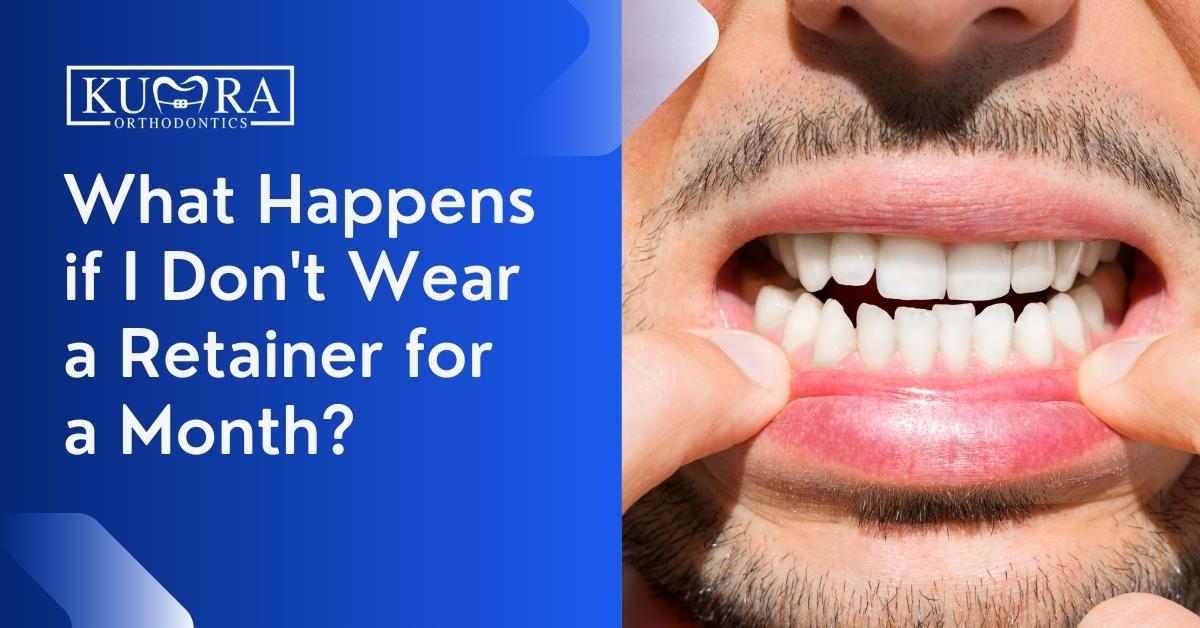After your braces are removed, your orthodontic experience does not end. It is critical to wear your retainer according to your orthodontist’s instructions. If you do not wear your retainer as instructed by your orthodontist, your teeth may revert to their previous position, negating the gains gained throughout your orthodontic treatment.
In this article, we’ll address the question, “what happens if you don’t wear retainers after braces?”.
What happens if you don’t wear your retainer?
If you have not worn your retainer for an extended period, you should not immediately begin wearing it again. Your teeth may have already begun to shift back to their original locations, and you risk injuring yourself if you attempt to force your retainer in. Your retainer should fit comfortably; if you have to force it back onto your teeth, it is no longer a good fit, likewise, if you leave your retainer in a heated car. If it does not fit over your teeth normally, you will very certainly need to replace it.
Discomfort may arise after a few moments of wearing your freshly discovered retainer. If this occurs, remove the retainer immediately and do not wear it again. This indicates that your teeth have changed significantly and that continuing to wear your previous retainer will result in tooth damage.
Schedule an appointment with your dentist to have your teeth realigned. The longer you wait, the more expensive it will be to correct your teeth’s position. Wearing an uncomfortable retainer may permanently harm a tooth and result in the death of its nerves, necessitating oral surgery.
If your teeth have shifted significantly and your current retainer is causing you discomfort, you may require a new set of retainers to keep them in place. Dentist-provided retainers involve appointments, examinations, and possibly x-rays. A new retainer can mean the difference between four Invisalign procedures and eight, costing thousands of dollars.
Needing an orthodontic appointment?
Visit Kumra Orthodontics Washington, DC or Kumra Orthodontics Stafford, VA, and request an appointment with us!
How frequently should you wear your retainer?
While each orthodontist may have a different recommendation, it is normally recommended that you wear your retainer every night for the first year. After that, you can reduce your workouts to 3-5 times per week. It’s ideal for sticking it in at night because you won’t be eating, drinking, conversing, or seeing anyone in public. Assure that you wear your retainer long enough not to cause discomfort. Discomfort is never enjoyable and is easily avoidable!
If you decide to use your retainer after a period of neglect finally, and it fits comfortably over your teeth, consider yourself quite fortunate! The best-case scenario is that you can fit the retainer in – even if it’s a little snug. At the very least, returning to consistent wear of this retainer may help correct this relapse and realign your teeth.
Unfortunately, if you neglect your retainer for an extended period, it is far more probable that you will be unable to fit it over your teeth at all. If this occurs, contact your orthodontist immediately to schedule an appointment. They will construct a new retainer for you to secure your teeth in their current place. This is unlikely to be as desired for many patients, as they will find they had lost some of the straightness they were so enthusiastic about when their braces were originally removed. However, avoiding more shifting is preferable to allowing time to wreak havoc on your recently straightened smile.
Read More: How to Know if Your Retainer Doesn’t Fit
What is relapsing in orthodontic treatment?
When your teeth revert to their previous locations, this is referred to as a relapse. This is because your gum tissue is still tender and adjusting to your teeth’s new location. Without the force exerted by the braces, your teeth might easily revert to their original positions.
While infrequent retainer use is not necessarily the cause of a relapse, it is the most frequently cited reason. Many patients underestimate the value of retainers, but the reality is that therapy does not end when the braces or aligners are removed. After the initial phase of therapy is completed, the teeth and surrounding bone and gums require time to consolidate in their new places. A retainer protects the teeth from forces that seek to reposition them and stabilizes them over time.
This can be avoided by wearing your retainer 24 hours a day for the first few months following the removal of your braces. Once your gums have adjusted to their new position, your orthodontist will permit you to wear your retainers overnight. Although your teeth will be more stable and your chance of relapse will be lower at this point, you must continue wearing your retainers for the remainder of your life if you want to keep your beautiful smile for life.
Related: A Comparison Guide of Night Guards Vs. Retainers
What Does Tooth Relapse Look Like?
Patients who lose their retainers and do not replace them or do not feel like putting them in will most likely notice the following: After about a month, your bite may begin to restore to its pre-orthodontic state. For instance, an overbite may recur, and your teeth may squeeze forward.
Contact Kumra Orthodontics to learn more about not wearing a retainer for a month
If you have recently completed your orthodontic treatment, it is important to continue wearing your retainer as prescribed by your orthodontist. Wearing a retainer helps maintain the alignment of your teeth, which can be undone if you stop using it as directed. For more information about how to wear and care for your retainer, contact Kumra Orthodontics today. We would be happy to answer any questions you may have and provide guidance on how to keep your smile looking its best!



